CREEPSHOW (1982)
An anthology which tells five terrifying tales inspired by the E.C horror comic books of the 1950s.
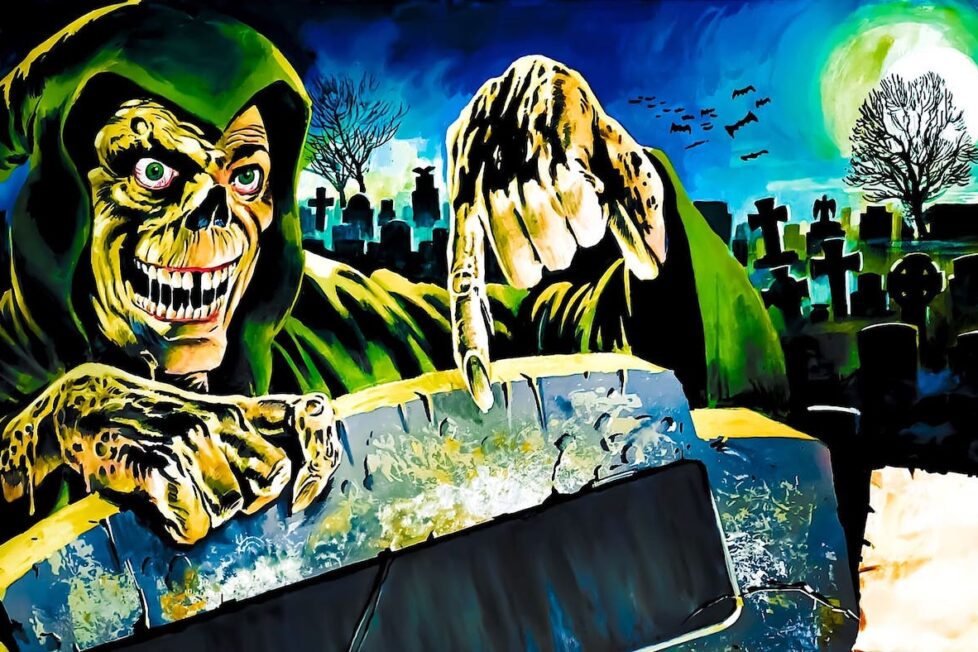
An anthology which tells five terrifying tales inspired by the E.C horror comic books of the 1950s.


At the dawn of the Cold War, E.C Comics (including The Vault of Horror and Tales From the Crypt) subtly defused the steadily mounting paranoia of young readers. They allowed children’s imagination to focus on bracing tales of horror concerning implacable and supernatural terrors. During their initial run and decades of reprints and reissues, the gruesome stories stirred the creativity of many. Two of the publication’s most ardent fans eventually became horror royalty…
George A. Romero (Night of the Living Dead) and Stephen King (Sleepwalkers) first collaborated when Romero was assigned to adapt Salem’s Lot. Although their vision never came to fruition, the project eventually emerged as Tobe Hooper’s acclaimed 1979 miniseries. Regardless, the pair’s friendship endured and they planned to adapt King’s post-apocalyptic fantasy The Stand. Unfortunately, they couldn’t reduce the 700-page novella down to a few hours, or find financing to support the production. However, in the interim, the two horror icons created a homage to their beloved 1950s comics. Featuring five diabolical tales, Creepshow became a gleeful exercise in adrenalised nastiness and loving craftsmanship.
The prologue introduces a young boy named Billy (King’s real-life son Joe Hill) reading the latest edition of the Creepshow comic. After being discovered by his overzealous father (Tom Atkins), the comic is tossed into a garbage can. “I told you before to never read this crap” Bill’s dad rages, before slapping his son across the face. As the father congratulates himself on such outstanding parenting, Billy seethes in his bedroom, spitting “I hope you rot in hell.” As John Harrison’s (Day of the Dead) incredible score slowly swells, a mouldering ghoul with a skeletal grin appears at the window. Billy smiles at ‘The Creep’ with the ecstatic delight of a boy whose every dream has suddenly been realised. As the comic topples onto the pavement outside, its pages spring to life and, in a rather brilliant framing device, the titular comic-book provides the foundation for the film’s animated titles and becomes the glue that binds the next five stories together.
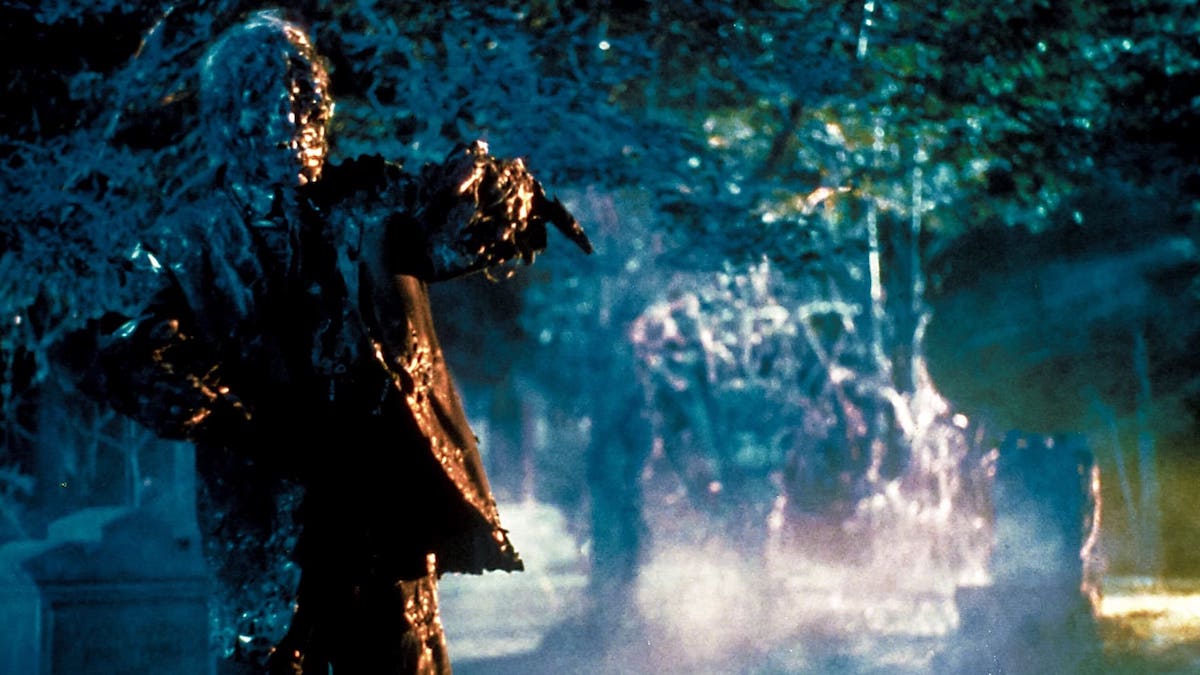

The first segment centres around the wealthy and dissolute Granthams as they gather on the family estate to commemorate the deceased family patriarch, Nathan Grantham (Jon Lormer). While awaiting the arrival of Great Aunt Bedelia (Viveca Lindfors), Sylvia (Carrie Nye) and Cass (Elizabeth Regan) share passive-aggressive quips. Meanwhile, Richard (Warner Shook) drunkenly divulges the family’s sordid secret to Cass’s new husband Hank (Ed Harris). He reveals that, seven years earlier, Bedelia bore the burden of being Nathan’s caretaker and their Freudian relationship was further exacerbated when Bedelia’s love interest was killed at the hands of her father. During one Father’s Day, she was pushed beyond her limits. As her cantankerous father screamed “where’s my cake?”, Bedelia bludgeoned him to death. In the present, Bedelia visits her father’s grave every Father’s Day out of remorse. However, on this particular Father’s Day, Nathan returns from the grave to exact revenge on his greedy heirs and claim that cake…
With healthy amounts of encroaching new Hollywood and 1970s melodramatics, “Father’s Day” sets the tone and expectations perfectly. Established in their dialogue, Romero relishes creating and setting up deliberately paper-thin characters for their eventual demise. Carrie Nye (The Group) proves quite effective in her villainous turn as hilariously mannered socialite Aunt Sylvia. She’s equally cold and calculating, making it great fun seeing her character get her just desserts. Whereas Viveca Lindfors (Exorcist III) is a pleasure to watch as the maniacally resentful Aunt Bedelia. Additionally, a baby-faced Ed Harris (The Abyss) brings panache to his role and applies his patented intense gaze to disco dancing. Unlike Amicus Production’s Tales From the Crypt (1972) and The Vault of Horror (1973), Romero understands the gallows humour and playful tone that previous adaptations missed. The final images of Uncle Nathan’s soiled and mouldering corpse emerging from the kitchen moaning “where’s my cake?” are uproarious. Establishing the tone for the following 120-minutes perfectly, “Father’s Day” is a great demented tale of patricide and revenge.
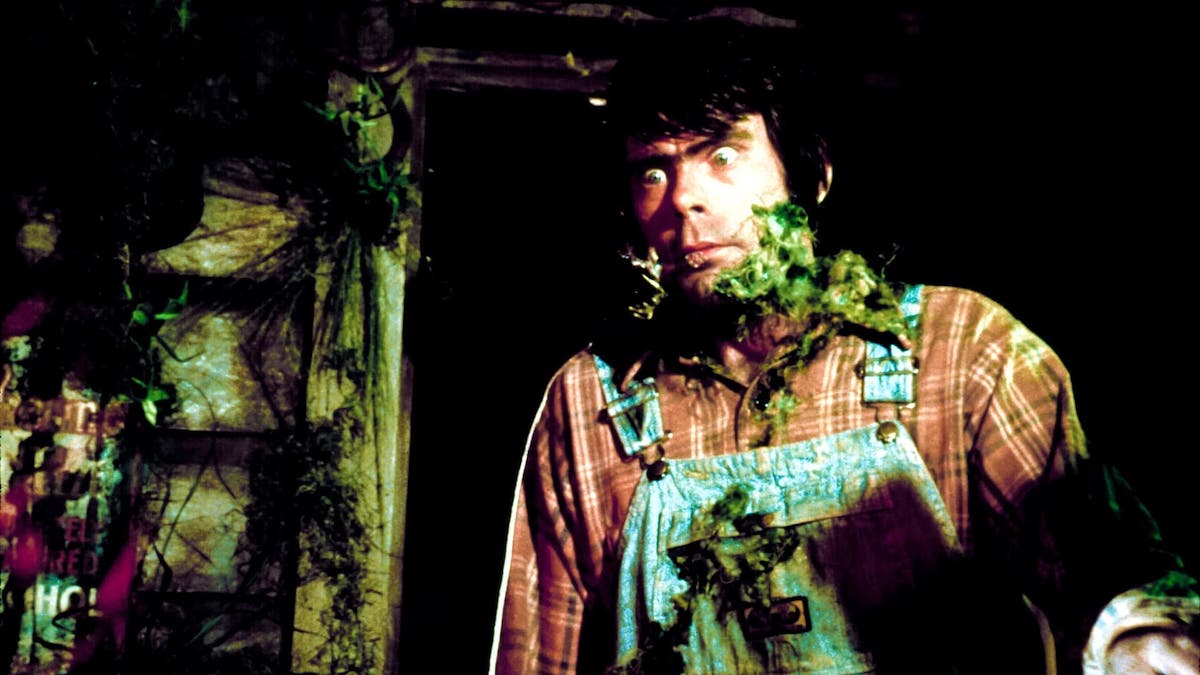

A stupid hayseed farmer is mystified by the sudden arrival of a meteor on his property. Jordy (Stephen King himself) believes he’ll be able to make money by selling the rock to a local university for $200, but unbeknownst to him, the meteor contains an alien parasite that quickly turns everything into weeds. He attempts to cool the molten surface of the rock with a bucket of water, but the meteor breaks in half and releases a glowing liquid which Jordy inadvertently touches and his tragic fate is sealed once Jordy notices green fungus sprouting all over the surface of his body. After envisioning a sinister Doctor (Bingo O’Malley) informing him his limbs will need to be amputated, Jordy avoids seeking medical attention and is soon driven to suicide once his entire body is enveloped by green moss. Meanwhile, his property has transformed into luscious green pastures of weeds and the alien parasite begins to spread toward Castle Rock.
Adapted from King’s short story “Weeds”, the second entry is wonderfully bleak and garnished with perfect amounts of comedy. “The Lonesome Death of Jordy Verrill” is a tragic journey of otherworldly discovery and eventual regret. After Romero encouraged him to play the role “as broad as a freeway”, King delivers a superb slapstick performance as a bucktoothed yokel. The Master of Horror channels the same nervous and volatile energy as a cartoon character. Although King’s acting continues to divide people, he adds tangible pathos to the role. Creepshow’s morality tales frequently showcase no redeemable characters and almost everyone earns their evil demise. However, while other segments invite audiences to cheer each comeuppance, “The Lonesome Death of Jordy Verrill” benefits from a unique and sympathetic note of sadness. Thankfully, Romero directs the segment with a light touch and Michael Gornick’s (Creepshow 2) cinematography maintains the playful atmosphere. The dream sequences feature some of Creepshow’s finest asymmetrical compositions of Bingo O’Malley’s (Two Evil Eyes) sinister doctor. Admittedly, it’s not the strongest segment, but it will remind audiences to be careful playing with something they don’t understand.
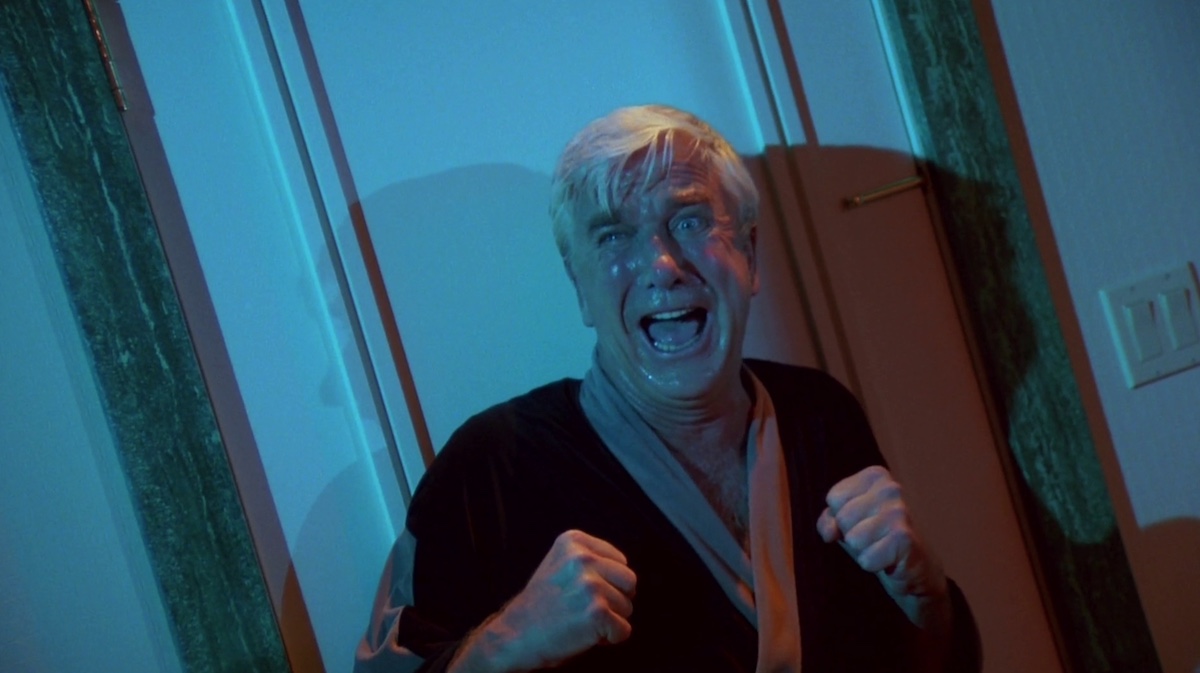

Richard Vickers (Leslie Nielsen) is a powerful TV executive and unaccustomed to losing anything he considers valuable. After discovering his young wife Becky (Gaylen Ross) is having an affair with a man called Harry (Ted Danson), he stages an unorthodox revenge plot. When confronting Harry at his house, Richard reveals an audio recording of Becky pleading for her life, insinuating she’s been buried by the sea. Harry travels with Richard to the beach in a desperate attempt to save Becky, but once Harry reaches the hole he discovers it’s empty and is forced at gunpoint to bury himself up to his neck in sand. As the tide rises, the diabolical Richard shows Harry footage of how he drowned his wife the same way, and as Harry watches Becky’s final moments, Richard gleefully records the rising tides of torture. Content with his cruel revenge, Richard watches the recordings at home… unaware two waterlogged corpses of the adulterous lovers have returned from the dead looking for revenge.
While the first two stories focus on the supernatural, “Something To Tide You Over” remains grounded and revolves around a sadistic husband tormenting his adulterous wife and her lover. It’s a subdued and demented psychological horror that demonstrates how King can capture an unhinged and vengeful mind. It also serves as a terrific reminder that Nielsen was as excellent at drama as he was at comedy. Years before he became primarily known for his incompetence in The Naked Gun (1988), the funnyman delivers an uncharacteristic performance as the malevolent Richard. It’s quite admirable seeing the actor veer seamlessly between deceptively cheerful to maliciously sinister in a single exchange. Additionally, both Ted Danson (Saving Private Ryan) and Gaylen Ross (Madman) deliver sympathetic performances despite their egregious actions. Although the brevity of length makes the story feel dramatically incomplete, “Something To Tide You Over” certainly pays homage to E.C Comic’s potent formula. Romero effortlessly generates a claustrophobic atmosphere by playing with the universal fear of drowning and being buried alive.
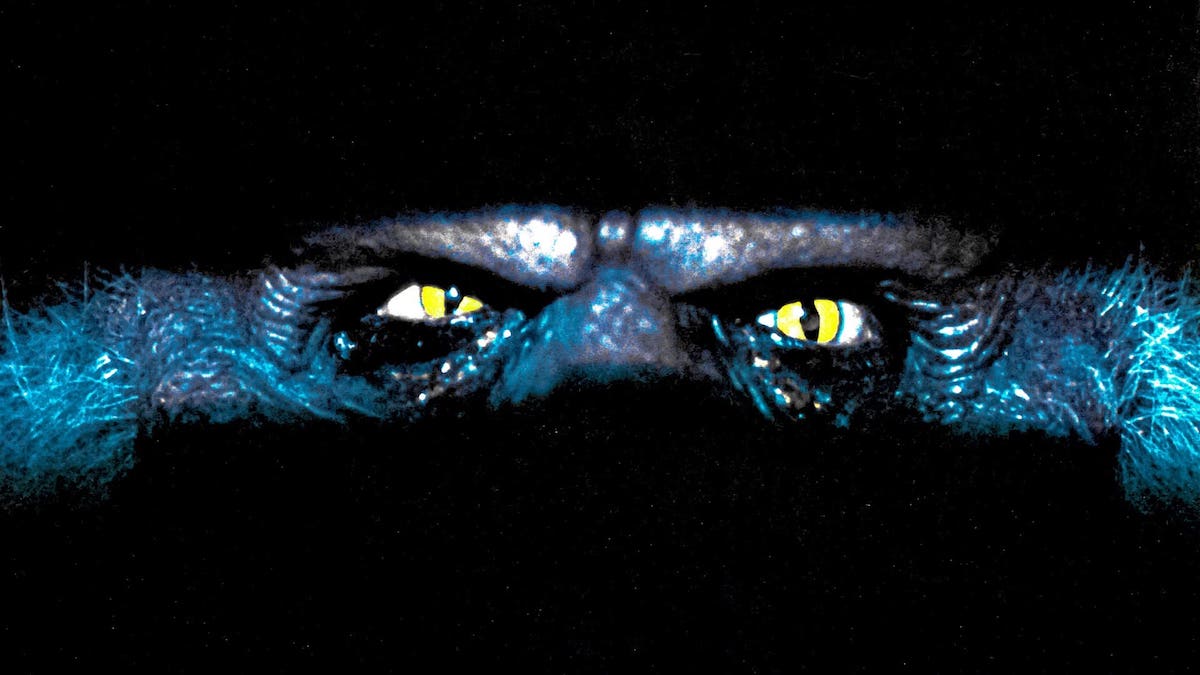

Mike the Janitor (Don Keefer) finds a mysterious wooden crate underneath the stairwells of Anderson Hall. Surprised by the discovery, he asks Professor Dexter Stanley (Fritz Weaver) to inspect it and they find a vicious creature with two beastly yellow eyes and a hideous gaping maw inside. The beast promptly eats the janitor and leaves the Professor in a state of shock. Dexter tells his friend and colleague, Professor Henry Northrup (Hal Holbrook), who’s being verbally and mentally abused by his shrewish wife, Wilma (Adrienne Barbeau), and has grown so tired of her disrespect at public functions he’s started fantasising about ways he could kill her. After learning about the creature that’s been unleashed in the basement of the university, Henry hatches a devilish scheme to use the creature to dispose of his spouse, so lures her there with promises of lurid gossip…
The fourth segment is a vastly risible black comedy where unhappiness drives an ordinary man to commit a seemingly unspeakable act. Drawing inspiration from The Thing From Another World (1951), “The Crate” is the longest of the five segments and truly captures the essence of ’50s creature features. Hal Holbrook (Evening Shade) provides unexpected nuance as the milquetoast English Professor seeing an opportunity to rid himself of his wife. However, it’s Adrienne Barbeau (The Fog) who steals the segment as Henry’s insufferable other half, drinking bourbon at breakfast and spouting insults including “I’ll be wearing your balls for earrings!” Romero crafts electrifying tension during the segment with some wonderful moments, but the most startling moment is when the savage monster is revealed. The story takes a dark turn towards the end and reflects King’s longtime theme that humanity is worse than monsters. It would be interesting to see “The Crate” fleshed out to feature length, although the story works beautifully as a vignette.
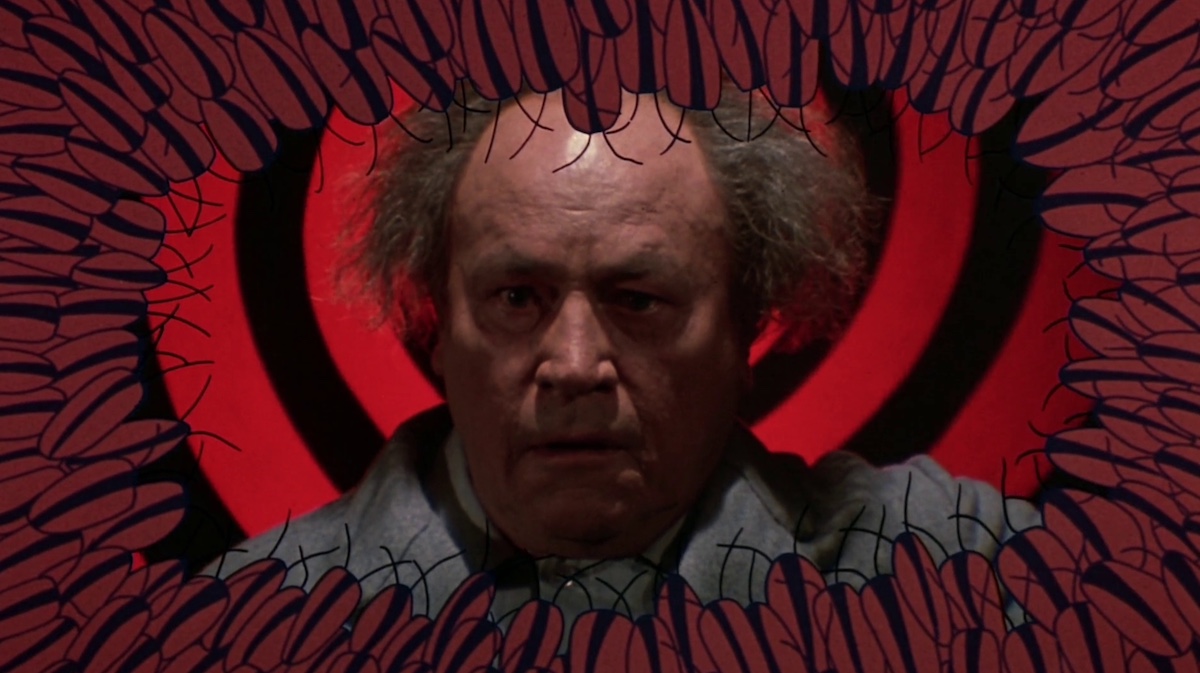

Upson Pratt (E. G. Marshall) is a wealthy businessman suffering from mysophobia. Secluded in his hermetically-sealed New York City apartment, Pratt fears bugs, germs, and anything he considers unsanitary. His worst fears become reality when thousands of cockroaches invade his sterile apartment during a power outage. Pratt attempts extermination by spraying them with insect repellent but seemingly nothing can stop the invasion. With the appearance of each new pest, the ruthless tycoon gradually descends deeper into his mania and quickly realises his mistreatment of those around him. As his apartment becomes overrun by hordes of aggressive creepy-crawlies, he finally locks himself in a panic room, only to see the insects swarming from the drains to engulf him…
Romero’s counter-culture attitude was always prevalent in his work. Beyond the chaotic surface of Night of the Living Dead was an examination of domestic racism and the Vietnam War, while Dawn of the Dead served as a composed and pointed commentary on consumerism. The director extends his critique by examining capitalist economics and race during the anthology’s final segment, “They’re Creeping Up On You!” Romero does a magnificent job translating his subtext and E.G Marshall’s (12 Angry Men) antipathy without forgetting to entertain the audience. Playing deliberately with the common phobia of insects, the horror is more visceral than any other segment. Rather than using animatronics or digital effects, King originally wanted to use various insects including some he had invented. Unfortunately due to budgetary constraints he eventually settled with South American cockroaches. Regardless, David A. Brody’s (Joe’s Apartment) entomology abilities deserve endless respect as the segment showcases some mischievously gruesome effects that will leave audiences squirming.
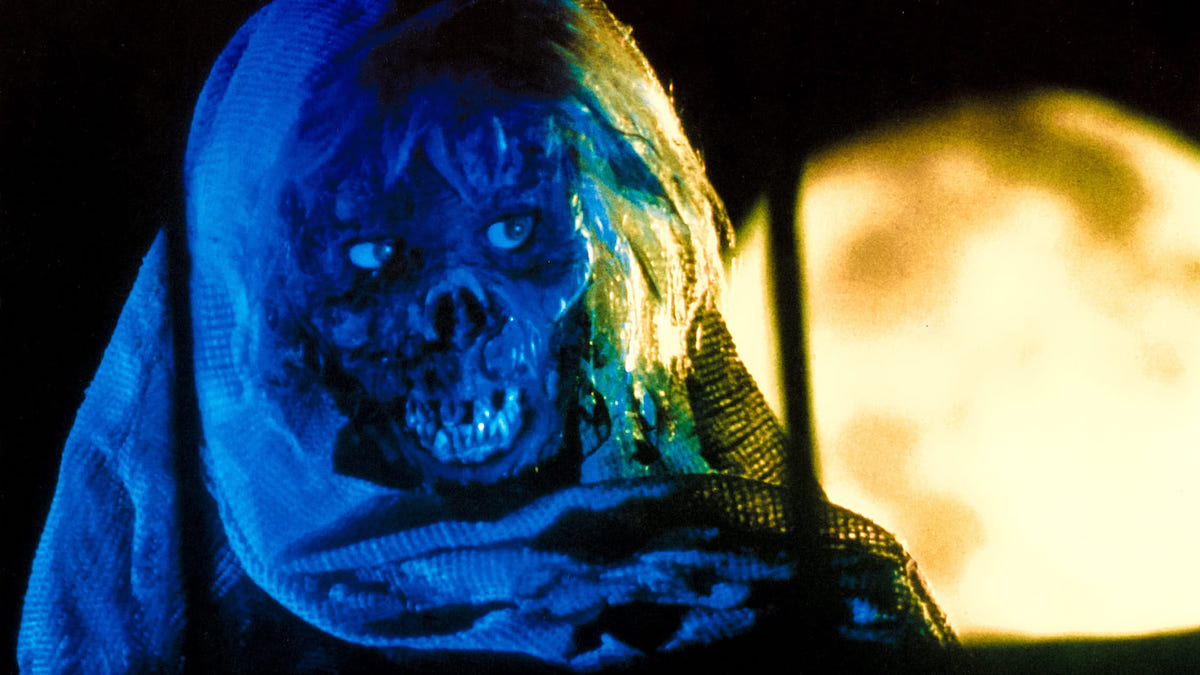
King’s work has proven difficult to adapt to feature lengths but his trademark ingenuity isn’t hampered by the anthology format. His novels including Cujo (1983) and Christine (1983) frequently lost their psychological and emotional impact. Meanwhile, his short stories expanded into features such as Children of the Corn (1984) and Maximum Overdrive (1986) proved too thin. Creepshow captures the author’s sensibilities that make his work so irresistible while emulating the unique style and simplistic nature of its source material. The stories in E.C Comics are invigorating tales of gruesome comeuppance, often engineered from beyond the grave. Sometimes the events would send the central characters down a road of madness, or they would inadvertently meet their demise. The author relishes the opportunity to create a tightly structured screenplay that unfolds in a gripping and entertaining fashion. “Something To Tide You Over” and “They’re Creeping Up On You!”, in particular, feature the vindictive and venal characters the author would undoubtedly enjoy exploring further. However, despite King’s enthusiastically fiendish screenplay, what makes Creepshow truly special is Romero’s direction.
Adapting comic-books to the big screen is an accomplishment but giving audiences the sense they’re experiencing a living comic is an added feat rarely achieved. Creepshow’s greatest success is how clearly it establishes what it aspires to be. Romero and King’s collaboration is the cinematic approximation of the gallows humour and gruesome pulp that permeates the pages of E.C Comics. Cletus Anderson’s (The Dark Half) exaggerated production design enhances the comic-book aesthetic in a beautiful way. The crumbling tombstones and shambling corpses during “Father’s Day” and “Something To Tide You Over” are bathed in vibrant primary colours, while Romero consciously satirises the nature of the comics by ending each segment with an animated composition to mirror the scene perfectly. The seamlessness of the effect is uncanny and emulates the artwork of Al Feldstein, Wally Wood, and Jack Davis. Admittedly, the hyper-stylised visuals and animated transitions may appear camp when viewed through a contemporary lens. However, it’s heavily appropriate considering it’s a pastiche of the comic’s macabre melodrama. Although Creepshow is never cited alongside significant comic book adaptations, Romero and King truly recapture the visual vibrancy and imaginative inspiration of the source material. It’s arguably every bit as essential to the genre as Richard Donner’s Superman: The Movie (1978) and Tim Burton’s Batman (1989).
One of the many reasons Creepshow continues to thrill horror fans four decades after its release is largely due to Tom Savini’s (From Dusk Till Dawn) glorious practical effects. After pioneering a new visceral approach to horror SFX throughout the 1970s, he quickly became Romero’s frequent collaborator working on classics, including Martin (1977) and Dawn of the Dead. Although the majority of Savini’s work appears brutally violent, there’s a dark and playful tone that underpins it. He explained, “I guess me and Romero wanted to be magicians of murder. If you see our names on the cinema billboard then you know you’re in for a really great magic show that will make you laugh but may also give you nightmares”. Whether it’s the waterlogged corpses in “Something To Tide You Over” or the hungry beast nicknamed ‘Fluffy’ in The Crate, his otherworldly creatures are both comically surreal and frighteningly gruesome. Perhaps the most impressive feat is implementing the highly original death by cockroach infestation during “They’re Creeping Up On You!” Savini utilises his skill and provides some fantastic gore and engaging creatures in each segment.
The original theatrical poster depicted ‘The Creep’ as a ticket holder at a movie theatre and proclaimed Creepshow would be “the most fun you’ll ever have being scared!” Although those goals may be laudable, Romero and King fulfil their promise. Released during a decade that was powered by interchangeable Friday the 13th (1980) knockoffs, Creepshow was a critical and commercial success. It eventually grossed $21M domestically, inevitably spawning two sequels and a highly successful television series. Although it lacks the production value of other anthologies including Amazing Stories (1985-87) and The Twilight Zone (1985-89), Creepshow stands out in positive ways. Romero and King captured the tone of the source material and delivered a clever representation of a graphic novel for cinema screens. It’s a gloriously disgusting ode to a quirky but important corner of literary history, and a wonderful collaboration between two of the most talented horror minds of all time.
USA | 1982 | 120 MINUTES | 1:33:1 | COLOUR | ENGLISH

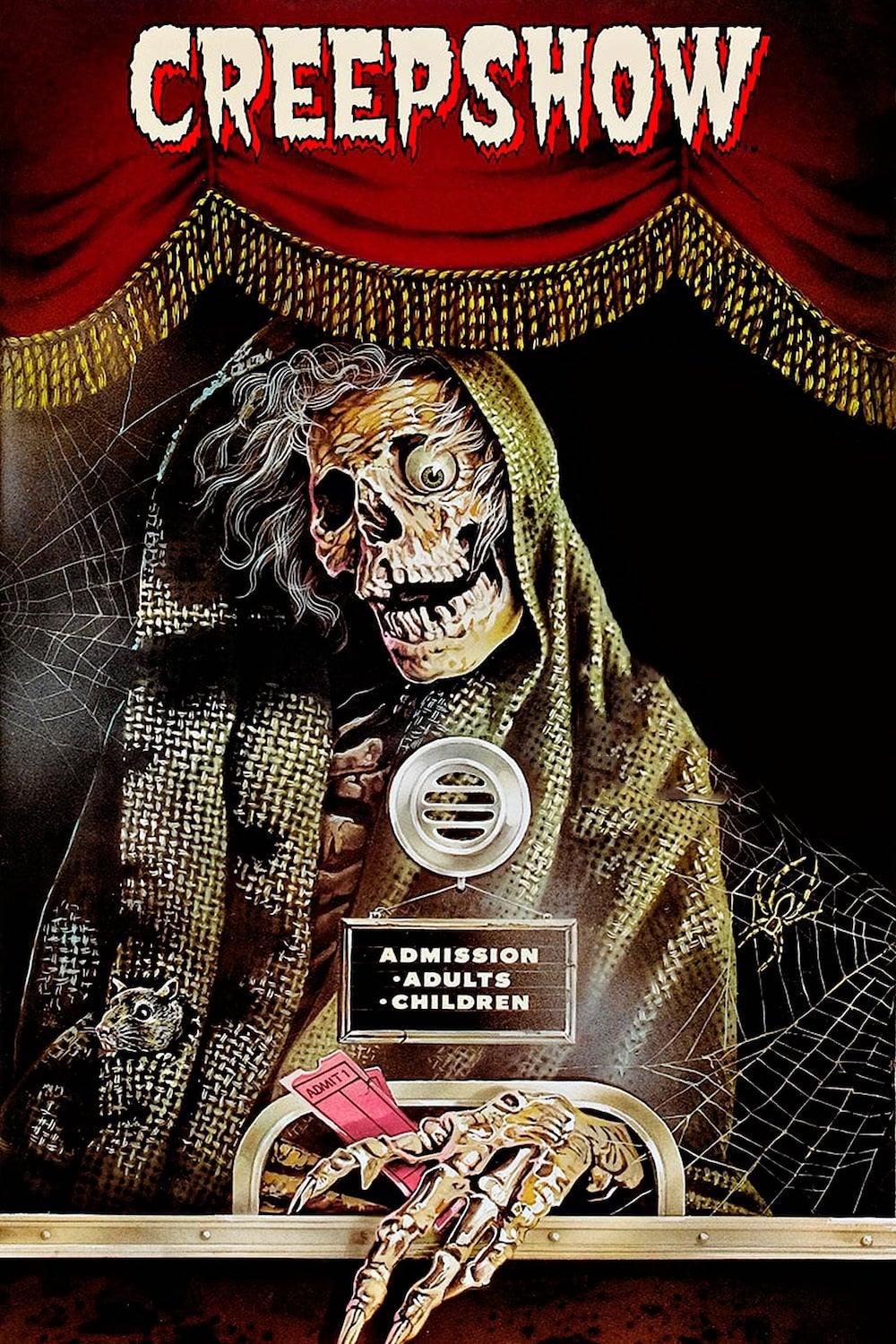
director: George A. Romero.
writer: Stephen King.
Starring: Ed Harris, Carrie Nye, Viveca Lindfors, Jon Lormer, Leslie Nielsen, Ted Danson, Hal Holbrook, Adrienne Barbeau & E.G. Marshall.
